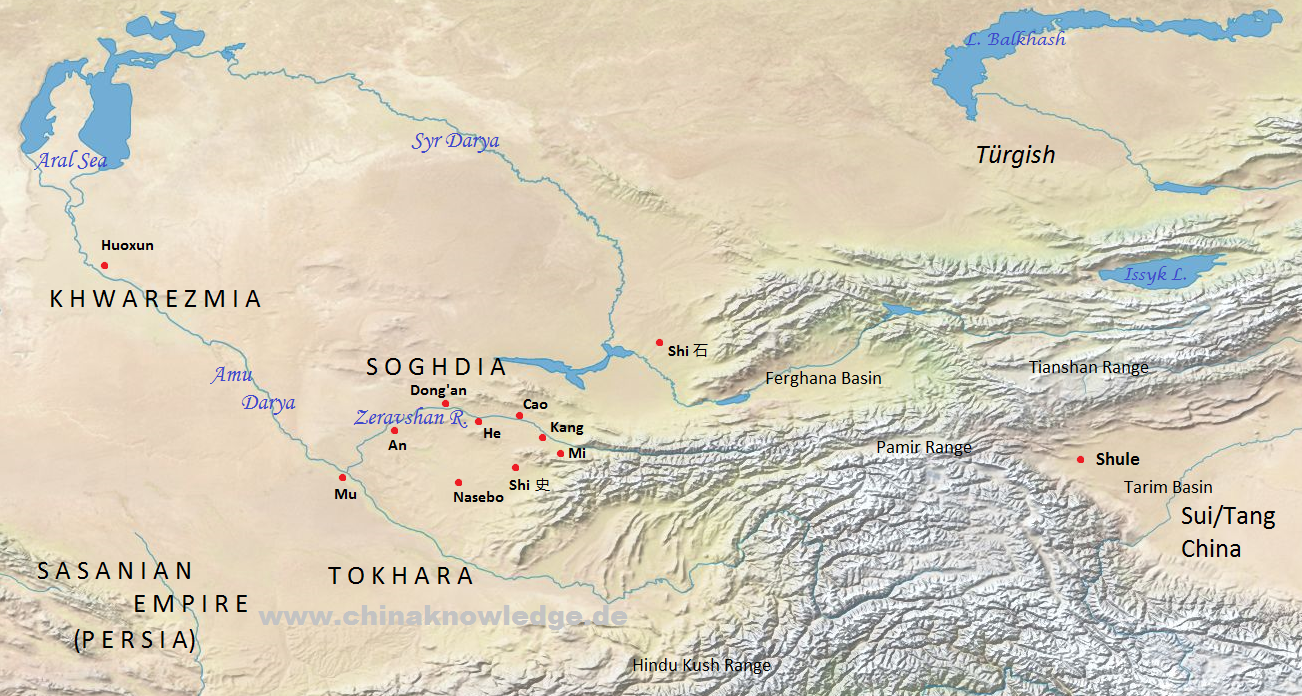The state of Heguo 何國 was located near Aktash and Kattakurgan in modern Uzbekistan, a land formerly known as Soghdia or Soghdiana, in Chinese Sute 粟特. According to traditional belief, the city was founded by one of the Nine Tribes from Zhaowu (Zhaowu jiuxing 昭武九姓). It flourished during the sixth and seventh centuries CE, and was subject to the state of Kangguo 康國 (the former Kangju 康居), but was culturally and politically influenced by the Western Türkish Khanate. The capital city was located at the banks of River Nami 那密 (today called Zeravshan, in Chinese Zelafushan 澤拉夫善河, a tributary of the Amu Darya), and was able to raise an army of thousand men.
 |
The Soghdia around 600 CE. Based on Tan Qixiang 譚其驤, ed. (1995), Zhongguo lishi ditu ji 中國歷史地圖集, Vol. 5, Sui, Tang, Wudai Shiguo shiqi 隋唐五代十國時期 (Beijing: Zhongguo ditu chubanshe, 1996). |
In the official dynastic history Xintangshu 新唐書 it is called Qushuangnijia 屈霜你迦 or Guishuangni 貴霜匿, a transliteration of the Persian word Kushanik (related to the kingdom of Kushan, Chinese name Guishuang 貴霜, with which the state of Heguo had nothing to do).
The first tribute missions went to China during the Sui 隋 (581-618) period, and then to the court of the Tang dynasty 唐 (618-907). Emperor Gaozong 唐高宗 (r. 649-683) transformed the state into the indirectly administrated prefecture (jimizhou 羈縻州) of Guishuang 貴霜. Its ruler Zhaowu Poda 昭武婆達 was formally appointed regional inspector (cishi 刺史). The city of the king of Heguo was famous for its paintings and buildings. In the 8th century the state was conquered by Muslim invaders.